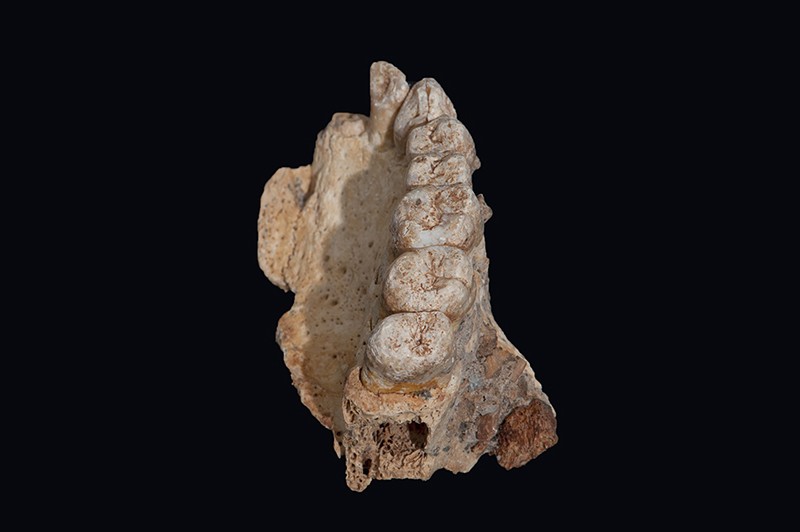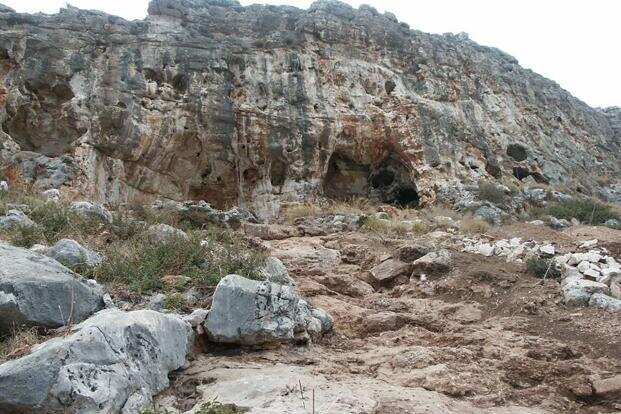Israeli fossils are the oldest modern humans ever found outside of Africa

Israeli fossils are the oldest modern humans ever found outside of Africa
A partial jawbone with seven teeth found in a cave in Israel represents what scientists are calling the oldest known homo sapiens remains outside Africa, which shows our species had travelled out of the Continent far earlier than previously known.

The researcher announced the discovery of the fossil that estimated between 177,000 to 194,000 years old and said the teeth bore telltale traits of Homo sapiens not present in close human relatives alive at the time including Neanderthals.
The fossil of a young adult’s left part of the upper jaw, sex remains unclear, came from Misliya Cave on the western slopes of Mount Carmel about 12 kilometres south of Haifa.
Also found inside the large collapsed cave, once inhabited by humans, were blades and other stone tools that were sophisticated for the time, several hearths and burnt animal bones.
Homo sapiens first appeared in Africa, with the earliest-known fossils roughly 300,000 years old.
A key milestone was when our species first ventured out of Africa en route to populating the far corners of the globe.
Until now, the oldest Homo sapiens fossils outside Africa had come from two other cave sites in Israel, including one also on Mount Carmel, about 90,000 to 120,000 years old.

The new discovery supports the idea that humans migrated out of Africa through a northern route, the Nile valley and the eastern Mediterranean coast, and not a southern route across the Bab al-Mandeb strait, the southern coast of Saudi Arabia, the Indian subcontinent and East Asia, said Tel Aviv University paleoanthropologist Israel Hershkovitz, who led the study.
“This is an exciting discovery that confirms other suggestions of an earlier migration out of Africa,” added paleoanthropologist Rolf Quam of Binghamton University in New York, a co-author of the study published in the journal Science.
“Now we finally have fossil evidence of this migration, in addition to inferences drawn from ancient DNA studies and archaeological sites,” Quam said, referring to genetic research suggesting a migration from Africa at least 220,000 years ago and probably earlier.
Hershkovitz said he believes Homo sapiens may have originated some 500,000 years ago.
The Misliya humans were likely nomadic, moving around the landscape following the movements of prey species or according to the seasons of the year, Quam said.
“They were capable hunters of large-game species including wild cattle, deer and gazelles.
They also made extensive use of plant materials, including perhaps for bedding,” Quam added.